Staircase to heaven - Dallmayr Spring tasting 2011
Dallmayr, Munich's traditional upscale delicatessen store, traditionally advertises the glories of its fine wine department by hosting a springtime tasting where a few select german and austrian wine growers and makers present the upcoming vintage in person. For some years now, they have given this event the ringingly neo-liberal and upper-middle classy title Winzerelite (elite of the wine growers). I'm itching to, and maybe some day will, write a whole separate posting on the sociology of what is right and what is deeply wrong with this name. But leaving that aside for the moment, I can't deny they always choose characterful venues to hold it in.
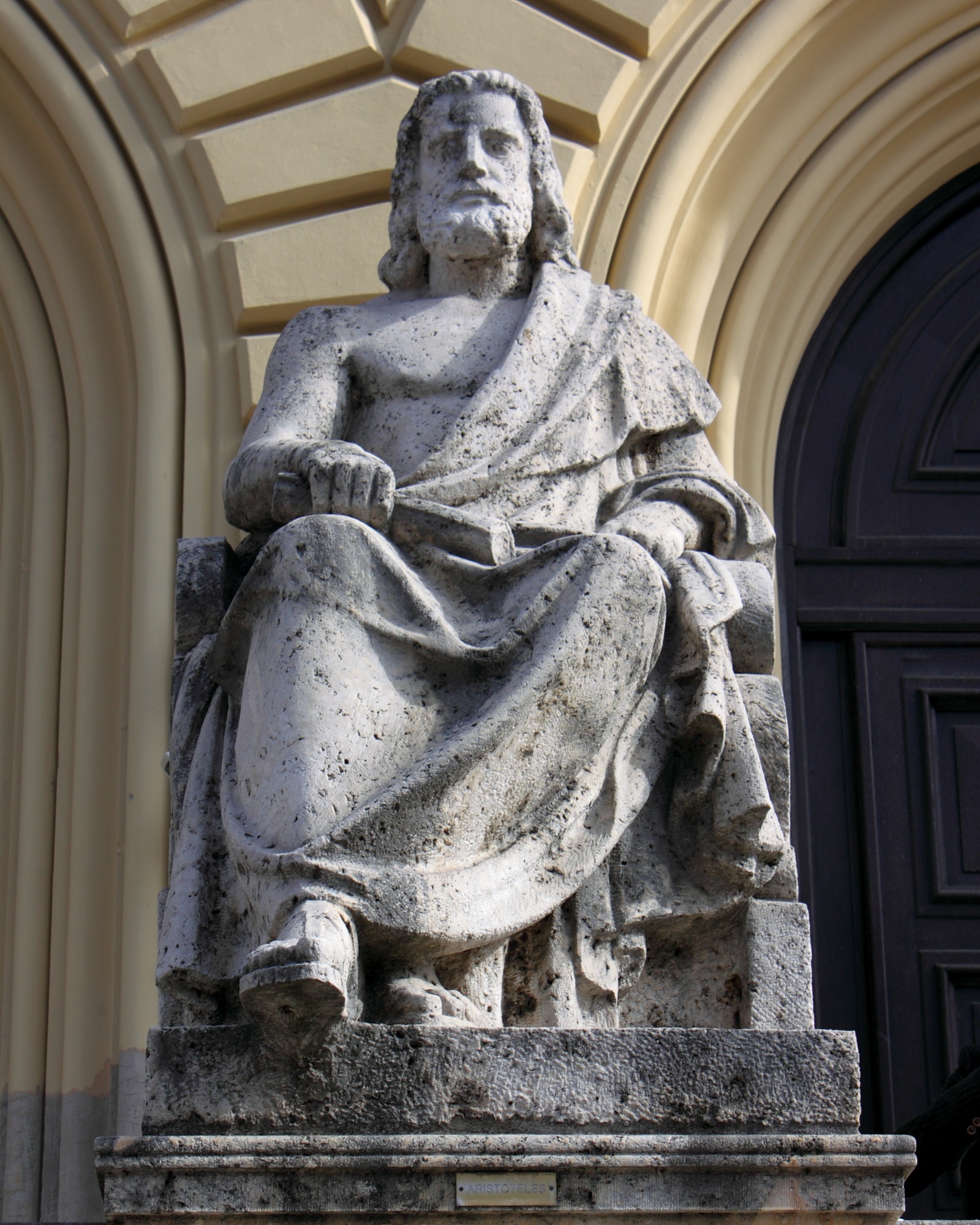
Before reviewing what the elite had brought to Munich, the few of them that we focussed on, I cannot spare you a few extra words on this year's location, the Bavarian State Library, as it is very special indeed, not least to myself.
After all, I spent many long days in its reading room, pouring over books and staring at a blank word processor screen, hoping that words would magically appear and arrange themselves into sentences, and that those would line up to form the chapters of whatever paper or thesis was due. And let me also show you the part of the building I slouched up with a heavy step in the morning, to saunter down chamois-like once the day's studying had been done: The grand staircase.
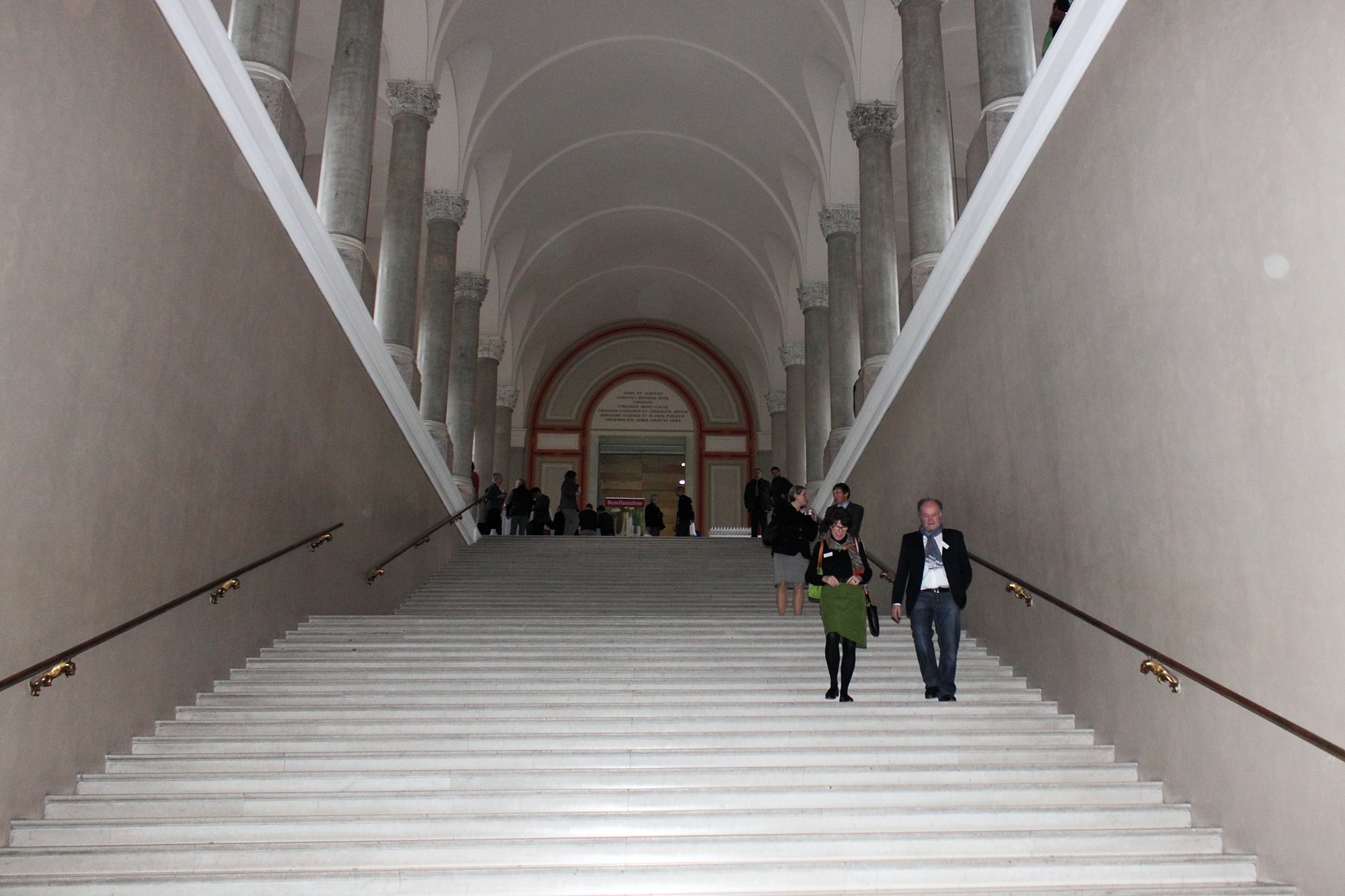
It's a particularly impressive variation on a common architectural theme of many 19th century public libraries. The staircase served the straightforward function of removing the reading rooms a safe distance from the noise of the street. But the physical climb it requires was also meant to symbolize an intellectual ascent, as the scholar could leave the vapid bustle of everyday pursuits behind with every step up those stairs, until he - and it was always a he back then - had reached that higher realm of tranquillity required for cultural productivity. Nowadays, as every Munich student can attest, it also makes a fantastic catwalk for long-legged girls in their quest to prove that a dedication to, say, the poetry of Rainer Maria Rilke, or to the sociological dimensions of urban planning in Latin America need not exclude an equal dedication to arranging multiple shoulder straps and asymmetrically cut tops for maximum hormonal effect on the opposite sex. In other words, a very inviting place.
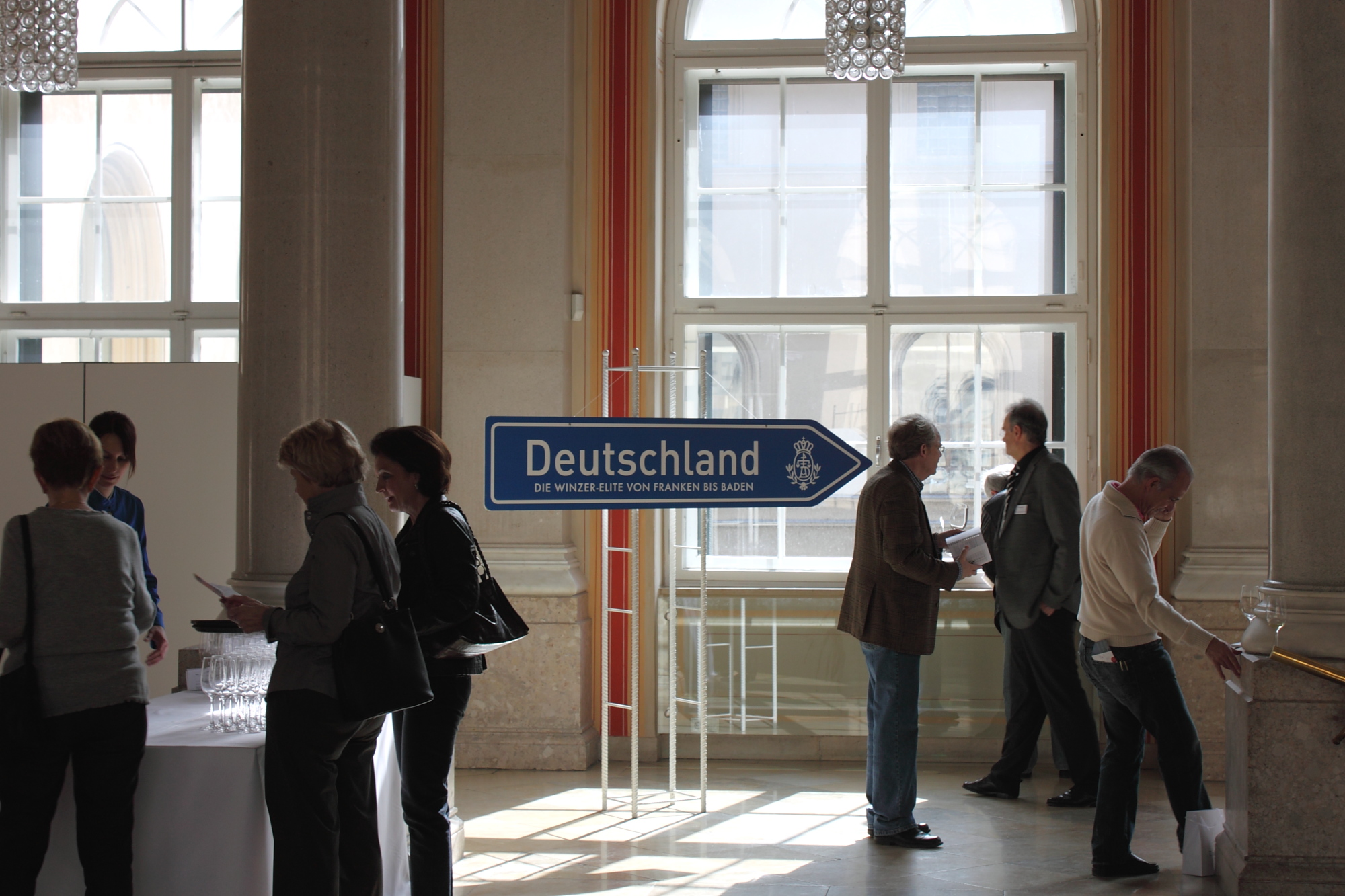
But now, it's time to master that staircase for a very different kind of ascent: to reach the higher realm of wine. I was very pleased to have Wine Rambler syndicated reporter and tasting associate Heidi along with the camera, not least because she managed to look every bit the professional press photographer. At least, I have never when on my own had someone politely step aside, saying "Oh no, you go ahead. After all, you're working". But I could get used to that. So, as Gollum had it, up, up, up the stairs we go, and the we come to - no, not the tunnel, but the Austrians.

For starters, two Steiermark estates nicely demonstrated the versatility of the Sauvignon Blanc grape in that region: E. W. Polz had a 2010 Sauvignon Blanc "Steinbach" that was both the grape and the 2010 vintage in a nutshell: Very green, strong acidity, grassy, gooseberry aromatics. Completely different, the mature 2007 Sauvignon blanc "Hochgrassnitzberg" Reserve: Wonderfully ripe, sweet yellow peppers, a touch of oak, slightly exotic too. Very original, a type of white wine that one doesn't get to taste that often. Stefan Potzinger's 2010 Sauvignon blanc "Ratsch" (Herbstabfüllung) again showed the more tropical, gooseberry and grassy aromatics, but I found it not nearly as exciting as the older Polz version
On to two utter cult wineries: Burgenland's Moric estate, famed for their ethereal, purist reds hit us with their 08 Blaufränkisch "Jagini": Transparent and focussed, finest herbs, freshly pressed juice of sour cherries, freshly cut green twigs. The 09 Blaufränkisch "Neckenmarkt Alte Reben" was cut from the same cloth, but with enormous substance bursting to break through in the background. Still so very young. Chardonnay specialist Velich also vindicated their reputation, beginning with the 09 "TO" cuvée made from Chardonnay, Welschriesling and Sauvignon blanc: Not a marvel of complexity, but still very very tasty. The 09 Chardonnay "Darscho" was the real deal: Green walnuts, ripe yellow fruit, slightly exotic, nutmeg, long long finish with better integrated oak than I think I've ever tasted in a white. The show-stopping 09 Chardonnay "Tiglat" had all of the above, with extra complexity. Before we could muse any longer on this wine's utterly seductive coconut and caramel glazing, Franken and Baden called us on.
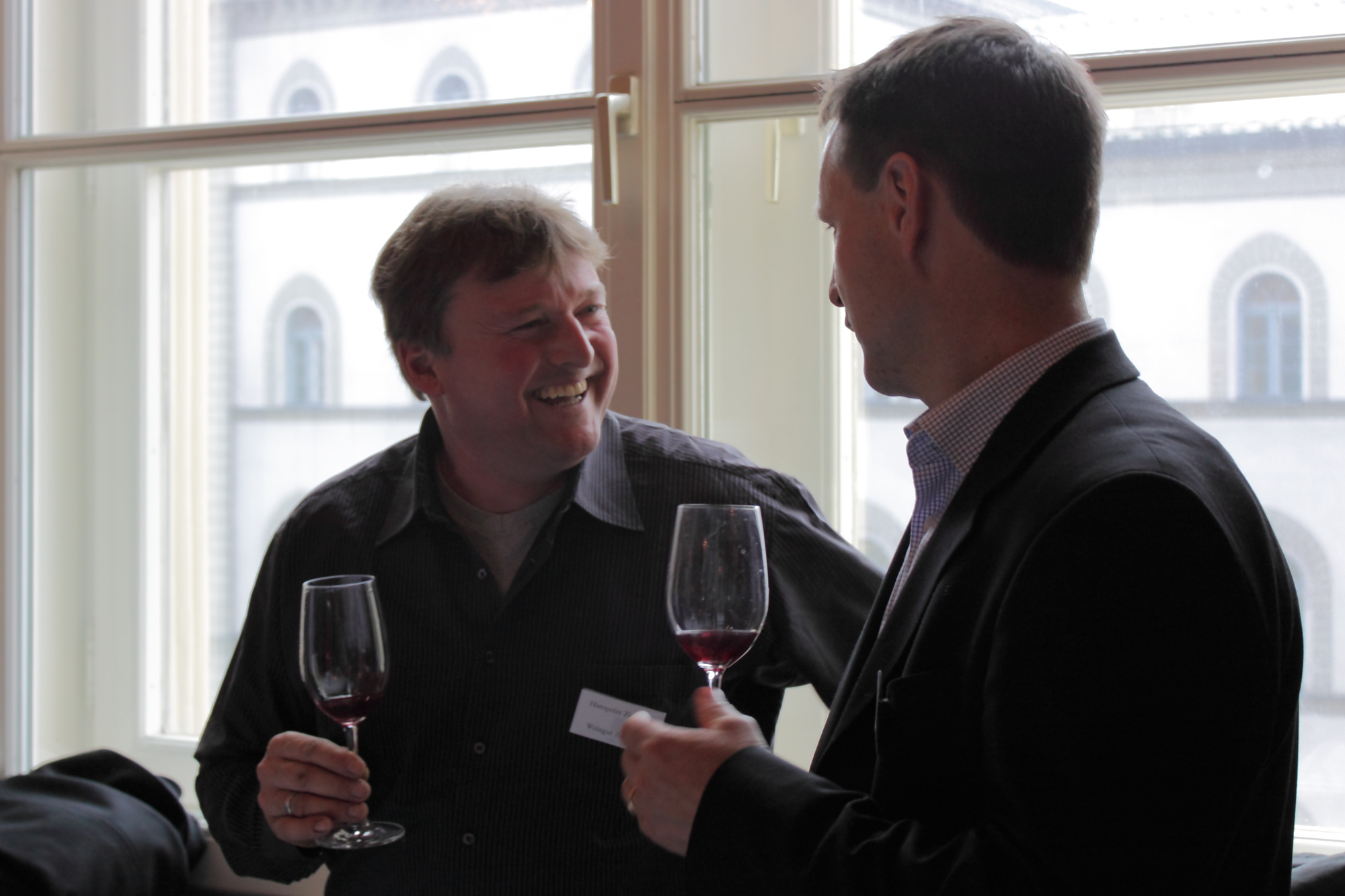
Rudolf Fürst is a legend of german winemaking, having been one of the very first to make Pinot Noir with world-class aspirations in the 1980s and early 90s, before the field became more crowded. His 09 Spätburgunder "Klingenberger" is a symphony of red berries , done in the typically "german" pinot style of lighter red fruit, slightly malty notes and a strong mineral background. He didn't blow us away with it, but beware - this subtle style of Pinot will creep up on you in no time.
Next, Ziereisen: What can I say, it's already well known that I am a personal fan on Hanspeter and Edeltraud Ziereisen for being among the most loquacious and honest and likeable of wine people anywhere. The two 09 Pinot Noirs "Schulen" and "Rhini" were both in the avantgardistic francophile style that they have perfected: Fresh, sinewy, acidic, with pure sour cherry aromatics. Slim, athletic and supremely drinkable, and they won't even be bottled any time soon. There's a winery who is doing everything right and deserves every success.
We rounded up the Baden part with a friendly and informative chat with Hans-Bert Espe from Shelter Winery (they of the insanely herbal and spicy, concentrated Pinot Noir), which Holger Koch (he of the light, elegant, flowery 2010 three-starred Pinot Gris "Halbuck") later joined. By way of oblique compliment, we wanted to know how much one hectare of vineyard would set us back in Baden (30.000 to 80.000 €, depending on sub-region, if I remember correctly). Not that we have any plans you need to know about, just curious, you understand. The two growers then went into shop-talk mode, with rumours and hints who had recently bought what from whom and how much Bernhard Huber of Malterdingen reportedly had to pay for his new grand-cru sites in the Breisgau. Most intriguing, but as our work there was done, we felt that we should discreetly leave them to it. After all, we had the Pfalz and Rheinhessen to take care of:
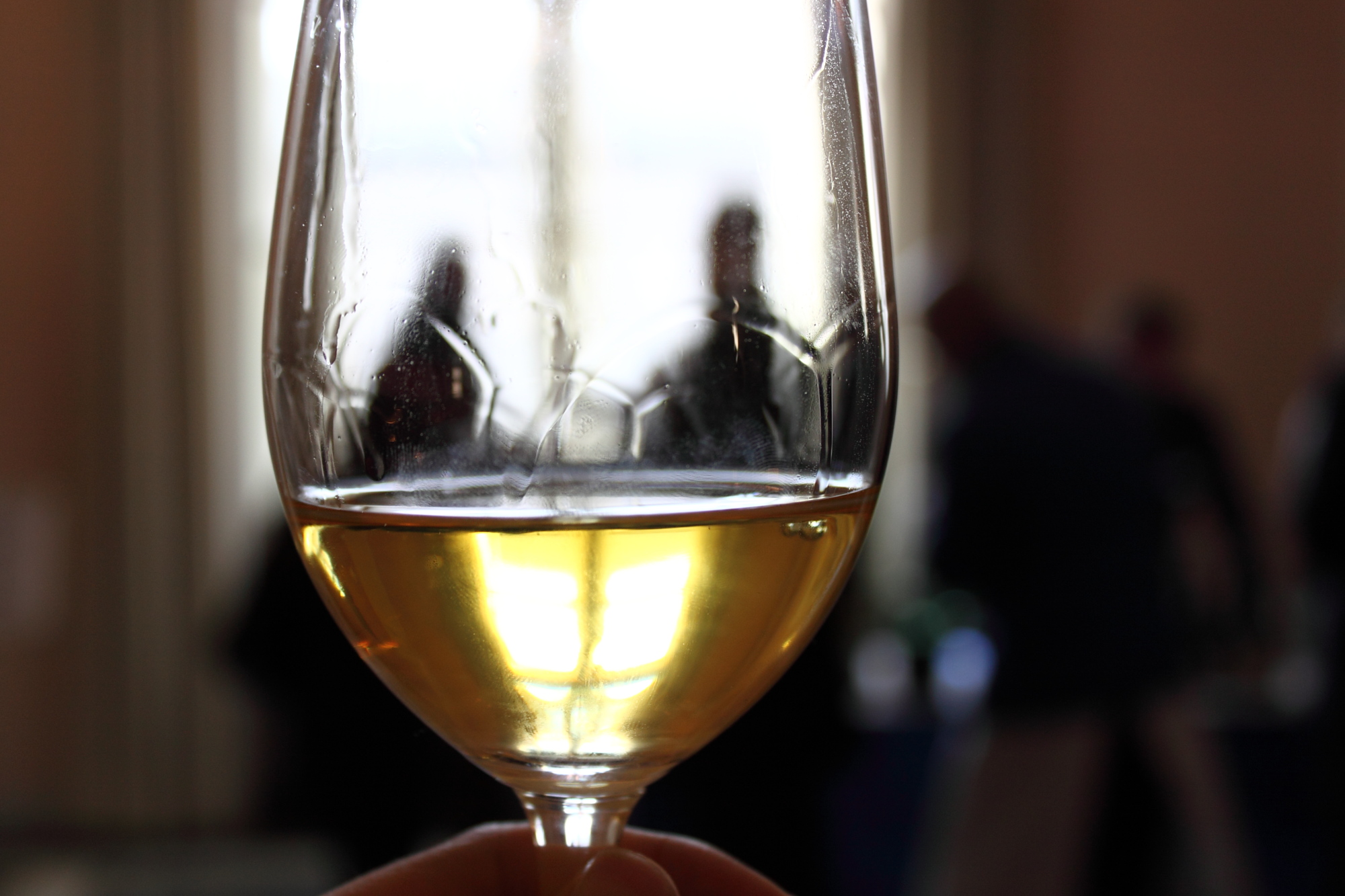
And we found what was probably the most convincingly priced and made Riesling of the afternoon: Tim Fröhlich of Schäfer-Fröhlich nailed it with his 2010 Bockenauer Felseneck Riesling trocken. Very strong on all counts: Fruit, minerality, concentration, great herbal dryness and power.
In contrast to that, Reichsrat von Buhl's 2010 Riesling "Ungeheuerlich" lost out somewhat as the fresher, but also more generically fruity Riesling: Tight Acidity, honey notes in the background. Okay.
Köhler-Ruprecht, another larger-than-life estate, started out calmly, I don't want to say boringly, with the 09 Kallstadter Saumagen Riesling Kabinett trocken, a wine that seemed little too well-behaved. But they followed it up with an icon: The 05 Kallstadter Saumagen Riesling Auslese trocken R is a world-class dry Riesling in its middle age, caramel beginning to show in the background, morbidly complex, ripe fruit, perfect acidity. The 06 Philippi Pinot Noir made its mark as a german red with balls: Concentrated, leathery, with bacon flavours, dark fruit and a sustained finish.
Markus Schneider, who is a marketing genius, but also a somewhat controversial figure in the german wine scene, had the most un-2010 2010 that you're ever likely to taste: The Gewürztraminer "Feuerberg" with his incredible golden colour is viscous, sumptuous stuff to chew on, slightly sweet and overwhelmingly floral. My choice with a freshly baked cake on a Sunday afternoon.
At this point already, the tasting would have been a success. But the Rheingau and the Mosel still lay before us, and that is saying something.
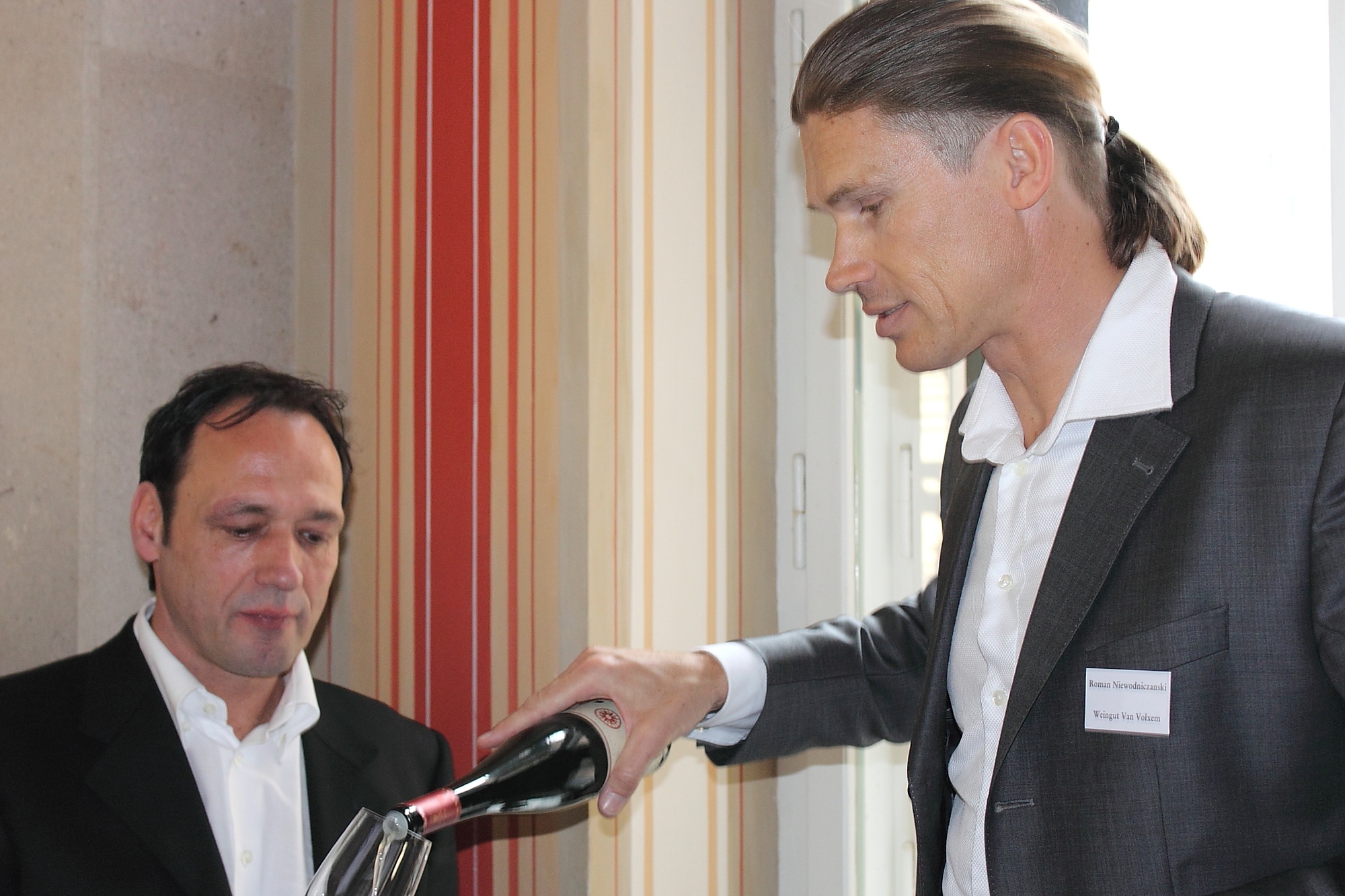
Peter Jakob Kühn, whom our regular readers know as the winner of last year's Wine Rambler wine of the year, again presents wines of recognisable character and difference. The 2010 Riesling "Quarzit" seemed absolutely tranquil, restful, mature while still in its young age, if that makes sense, while the 2010 Riesling "Landgeflecht" struck us as the fresher, more urgent, more vibrant and more unruly wine. Kühn wines are always something to remember and to talk about.
Kudos to Markus Molitor for the daring move of bringing a 2000 Zeltinger Sonnenuhr Spätlese, 2000 being known generally as a stinking bad vintage. Interesting, and noticeably matured, a wine for the fans of petrol notes in Riesling. Well done.
Needless to say, we ended on a series of sweet Rieslings: I still find those hard to taste once you have started to overdose on sugar and entered the stage of comatose, open-mouthed happiness. Cases in point: The 2010 Bernkasteler Doctor Auslese from Wegeler, the 2010 Kiedricher Gräfenberg Auslese from Weil and the 2010 Brauneberger Juffer-Sonnenuhr Auslese Goldkapsel #12 from Fritz Haag.
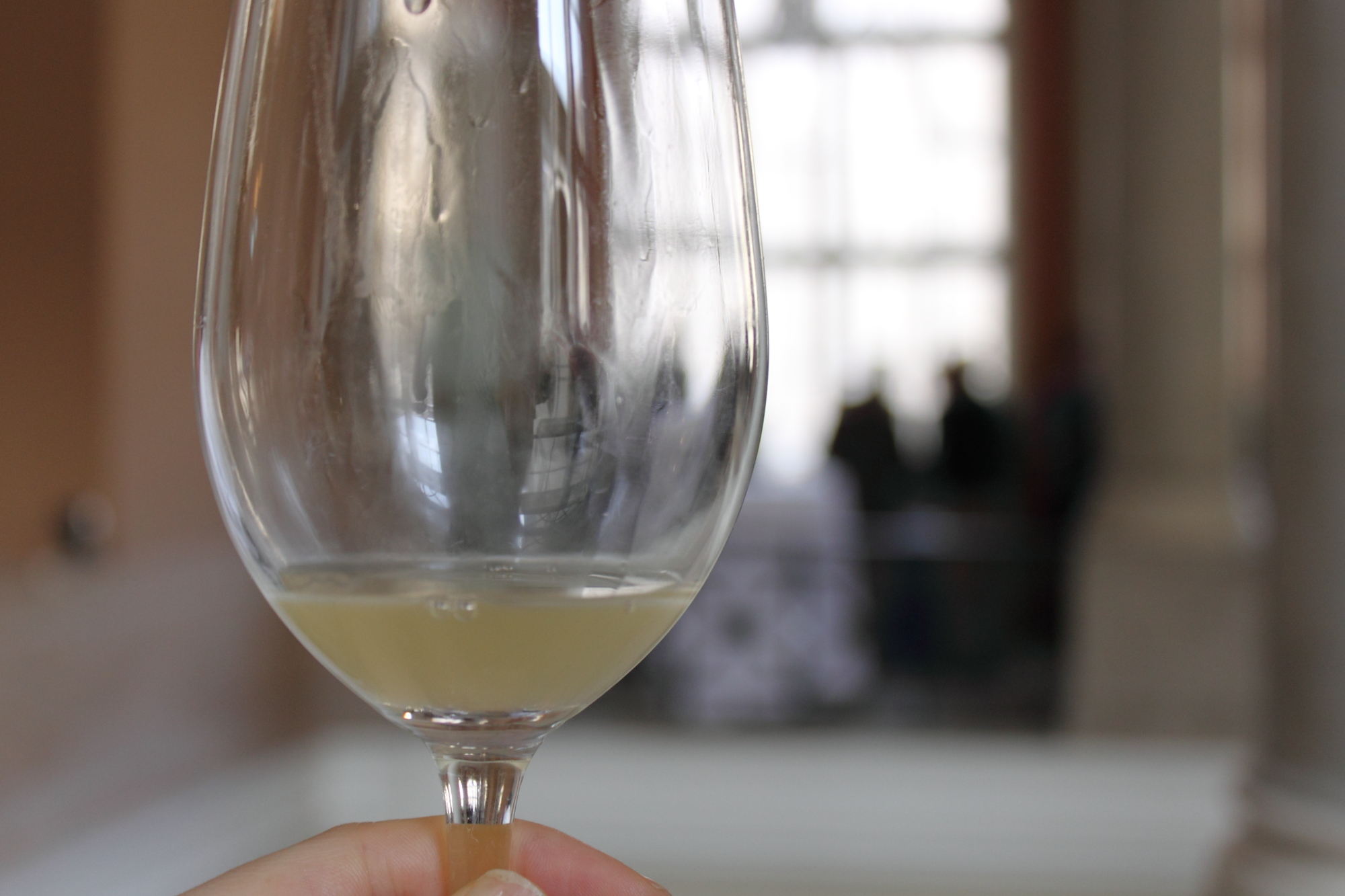
Wine talk-wise, the phrase of the afternoon was "barrel sample". This means that wines are taken unfiltered from the barrels where they are finishing their fermentation process to be tasted. But you knew that already, didn't you. So did we, and after being told for the seventh or eight time, it became a tad repetitive. In fairness, most winemakers didn't make a meal of it: "You know it's a barrel sample, right, so it may still evolve a bit or take a slightly different direction, but essentially, that's it". But enter Roman Niewodniczanski, the hulking, pony-tailed, ultra-dedicated owner of the Van Voxem estate: "I should not even be serving you this, I could never let you walk away and think that this is a Van Volxem wine." Relax, Roman, barrel sample and all that, we know the drill. Everybody knows a guy who is fantastic at what he does, but can at times be a little too, well, intense. That afternoon, Roman was that guy.
The tasting over, and its effects noticeable, the last question of day was answered satisfactorily: Yes, it is possible to navigate that stairway on the way down in a state of advanced tipsiness.


Nice
I bet you had a good time. Dont remember the Schäfer Fröhlich Bockenauer as being outstanding.. but at the Weinbörse in Mainz there might also be a Riesling overdose, making it hard to see some variations.
In reply to Nice by Alex
Bockenauer
Thanks, Alex. Too good a time, frankly, to produce tasting notes on which I would bet my blogalistical integrity. I liked the Bockenauer Felseneck then because it had substance and ripeness after a string of unusually slim Pfalz boys, but even a different direction of navigating the tasting tables could have led to quite a different impression, I'm sure.
Schneider
Wow.. cool tasting with a lot of my favorites!
Schneider is not one of them however. I've only tried one of his reds in the past and found it absolutely horrendous. I am curious however, as to why he is a controversial figure. Could you fill me in?
In reply to Schneider by Vimpressionniste
Controversial Schneider
Didier, "controversial figure" was putting it a bit strongly. There was (still is?) a lively debate in the german blogosphere about his whole marketing concept, which relies on pop-cultural references and innuendo (remember his wine "sex machine"?) and is the opposite of the image of the wine maker as a soft-spoken craftsman that people are still used to, I suppose. I remember that it drew particular criticism when he started using the vineyard name "Kirchenstück" prominently on his Riesling labels. Perfectly in order, except that the famous vineyard that this would inevitable be taken to refer to is of course the Forster Kirchenstück, while Schneider's Ellerstadter Kirchenstück, a completely different piece of land, is unremarkable and quite flat. Unobjectionable, of course, but to the more sceptical, this was a perfect instance of style over substance.
In reply to Controversial Schneider by Julian
What a jerk!
I've got nothing against creative labeling, but as you say "style over substance" is what gives marketing a bad name. If his other wines are anything like the overpriced "black print", it would seem that this is clearly the case at this estate. That Kirschenstueck bit is absolutely revolting and unacceptable!!
In reply to What a jerk! by Vimpressionniste
Re: Controversial Schneider
Manners, Didier! Seriously, I can see why people don't like him, but since it's not a capital crime to pull no punches when it comes to marketing, I can't get too worked up myself. My answer would be to go for people like Martin Müllen oder Hans-Peter Ziereisen instead. As to the Kirchenstück story, I tracked back the original discussion to here
http://www.talk-about-wine.de/topic.asp?TOPIC_ID=2427&whichpage=2
and need to amend my original formulation somewhat: It seems that Schneider only implicitly and indirectly made use of the greater prestige of the "other" Kirchenstück, not actively. Sorry. I'll revise my earlier comment in a minute.
In reply to Re: Controversial Schneider by Julian
ticket?
How can I get a ticket for this awesome tasting??
besst wishes,
ralph